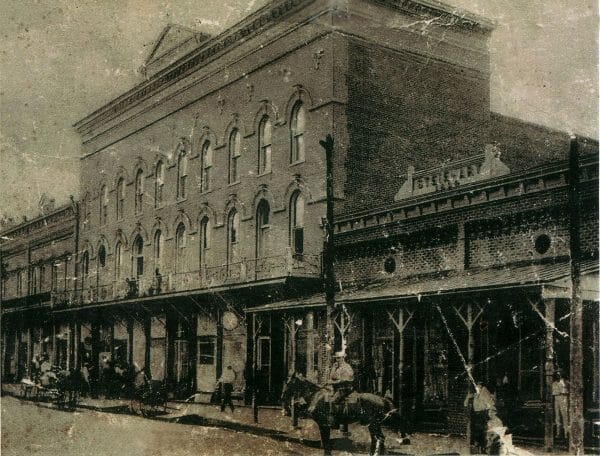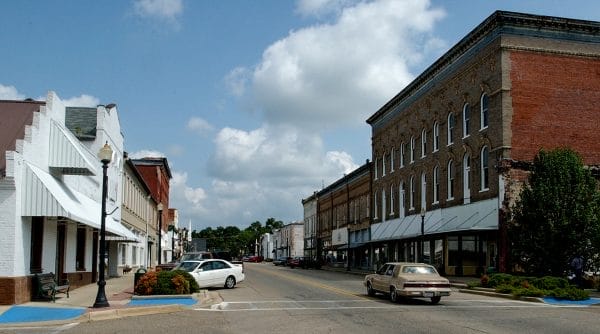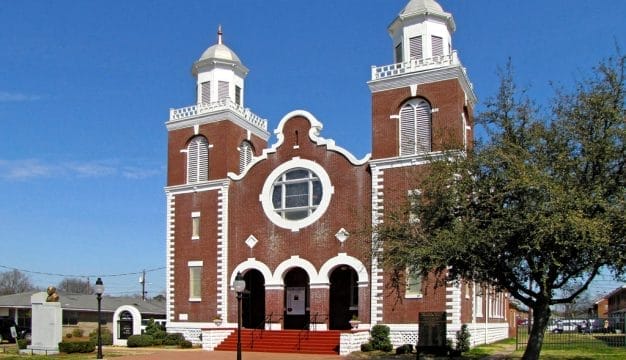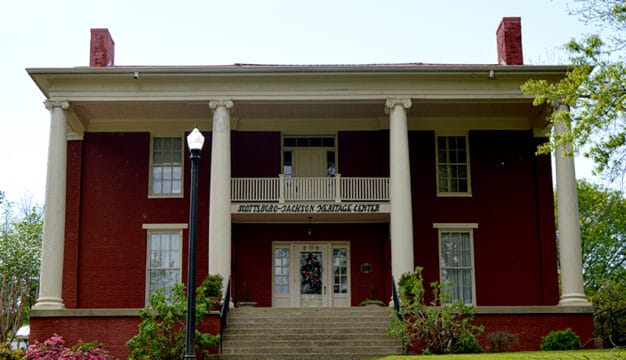Greensboro Opera House
 Greensboro Opera House
The Greensboro Opera House in Greensboro, Hale County, is a cultural and performance venue for local and national performing arts groups. The building that houses the Opera House was constructed in 1903 but fell into disrepair by the outbreak of World War II. In 2003, a group of local citizens began a fundraising program to restore the building to its pre-war state, sparking the beginning of a larger revitalization effort in downtown Greensboro. As of 2017, the first floor of the Greensboro Opera House had been restored, with efforts underway to renovate the second and third floors.
Greensboro Opera House
The Greensboro Opera House in Greensboro, Hale County, is a cultural and performance venue for local and national performing arts groups. The building that houses the Opera House was constructed in 1903 but fell into disrepair by the outbreak of World War II. In 2003, a group of local citizens began a fundraising program to restore the building to its pre-war state, sparking the beginning of a larger revitalization effort in downtown Greensboro. As of 2017, the first floor of the Greensboro Opera House had been restored, with efforts underway to renovate the second and third floors.
The area encompassing the modern Greensboro Opera House contained an earlier opera house, built in the 1890s, that burned to the ground in 1902. The construction of the 1903 Greensboro Opera House was part of a wave of opera houses built across the rural south throughout the late nineteenth and early twentieth centuries. Recognizing the cultural importance of an opera house, local politician Jeffries A. Blunt funded construction of the new building. It was typical of opera houses of this period, having three-stories with retail spaces on the ground floor and a theater and offices on the second and third floors. In addition to hosting theatrical performances, concerts, lectures, town meetings, and dances, the Greensboro Opera House also served as the first movie theater in the area before a dedicated movie theater was constructed.
 Greensboro Opera House
The Greensboro Opera House served as both a performing arts center and meeting place until the Great Depression, when profits began to decline significantly. By the eve of World War II, the financial straits of the company led to the facility’s permanent closure. The retail stores on the first floor continued operation, but the second and third floors, including the theater, lay derelict until 2003. That year, a group of local citizens spearheaded by local Hale County district judge William “Sonny” Ryan had the idea to purchase the opera house, restore it, and use it as the beginning of a revitalization of downtown Greensboro. Founding the nonprofit group Greensboro Opera House, Inc., the group was dedicated to returning the opera house to its former use as a multi-purpose cultural center.
Greensboro Opera House
The Greensboro Opera House served as both a performing arts center and meeting place until the Great Depression, when profits began to decline significantly. By the eve of World War II, the financial straits of the company led to the facility’s permanent closure. The retail stores on the first floor continued operation, but the second and third floors, including the theater, lay derelict until 2003. That year, a group of local citizens spearheaded by local Hale County district judge William “Sonny” Ryan had the idea to purchase the opera house, restore it, and use it as the beginning of a revitalization of downtown Greensboro. Founding the nonprofit group Greensboro Opera House, Inc., the group was dedicated to returning the opera house to its former use as a multi-purpose cultural center.
From 2003 to 2006, Greensboro Opera House, Inc. raised money through a combination of donations from local citizens, grants, and funding from the Alabama State Council on the Arts to purchase and begin revitalizing the building at a cost of a little more than $500,000. In 2016, the restored first floor of the property was unveiled as a space for meetings, live performances, art exhibits, lectures, and other events.
The building is a contributing property to the Greensboro Historic District, which was listed on the National Register of Historic Places in 1976. The district stretches along 14 blocks and encompasses a commercial section and two residential sections. The district includes famed Magnolia Grove (ca. 1840) and approximately 140 other residential and commercial structures built before the American Civil War up to the 1950s, with many dating from the 1880s into the early twentieth century.


